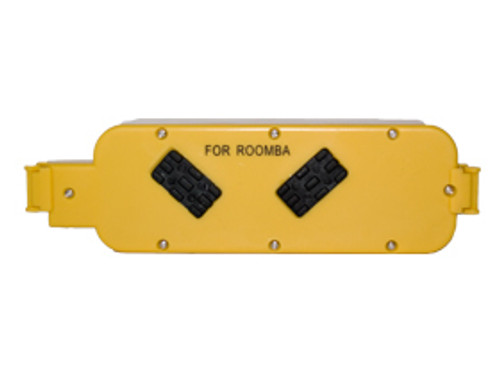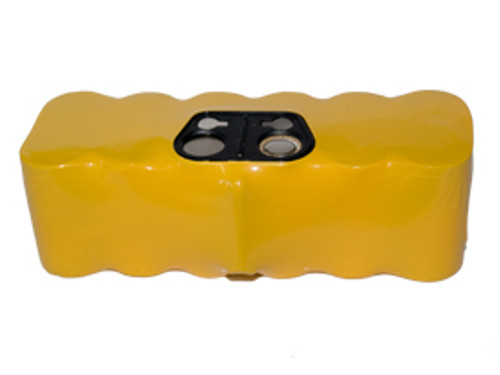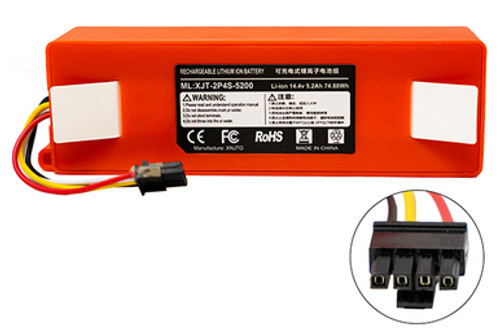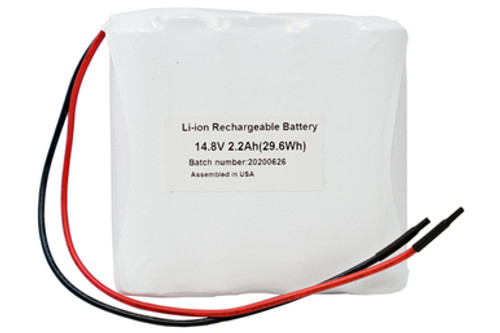12.8 - 25.2 Volt
-

-

-

-

-

-

-

-

-

14.8 Volt Lithium Ion Battery Pack (2200 mAh) with Protection IC
$78.39As low as:- Buy in bulk and save
Bulk discount rates
Below are the available bulk discount rates for each individual item when you purchase a certain amount
- Buy 2 - 3 and pay only $78.39 each
- Buy 4 - 8 and pay only $74.49 each
- Buy 9 - 17 and pay only $72.99 each
- Buy 18 or above and pay only $72.99 each
-

-

14.8 Volt Lithium Ion Battery Pack (2600 mAh) with Protection IC
$94.09As low as:- Buy in bulk and save
Bulk discount rates
Below are the available bulk discount rates for each individual item when you purchase a certain amount
- Buy 2 - 3 and pay only $94.09 each
- Buy 4 - 7 and pay only $89.39 each
- Buy 8 - 14 and pay only $87.49 each
- Buy 15 or above and pay only $87.49 each
-

12.8 Volt LiFePO4 Battery Pack with Leads (1500 mAh)
$97.49As low as:- Buy in bulk and save
Bulk discount rates
Below are the available bulk discount rates for each individual item when you purchase a certain amount
- Buy 2 - 10 and pay only $97.49 each
- Buy 11 - 14 and pay only $87.69 each
- Buy 15 or above and pay only $87.69 each
-

18.5 Volt Lithium Ion Battery Pack (2600 mAh) with Protection IC
$109.79As low as:- Buy in bulk and save
Bulk discount rates
Below are the available bulk discount rates for each individual item when you purchase a certain amount
- Buy 2 - 3 and pay only $109.79 each
- Buy 4 - 6 and pay only $104.29 each
- Buy 7 - 12 and pay only $102.09 each
- Buy 13 or above and pay only $102.09 each
-

-

12.8 Volt LiFePO4 Battery Pack with Leads (3300 mAh)
$128.79As low as:- Buy in bulk and save
Bulk discount rates
Below are the available bulk discount rates for each individual item when you purchase a certain amount
- Buy 2 - 8 and pay only $128.79 each
- Buy 9 - 10 and pay only $115.99 each
- Buy 11 or above and pay only $115.99 each
-

-

22.2 Volt Lithium Ion Battery Pack (2600 mAh) with Protection IC
$156.79As low as:- Buy in bulk and save
Bulk discount rates
Below are the available bulk discount rates for each individual item when you purchase a certain amount
- Buy 2 - 3 and pay only $156.79 each
- Buy 4 - 5 and pay only $148.99 each
- Buy 6 - 8 and pay only $145.79 each
- Buy 9 or above and pay only $145.79 each
-

12.8 Volt LiFePO4 Battery Pack with Leads (6000 mAh)
$193.19As low as:- Buy in bulk and save
Bulk discount rates
Below are the available bulk discount rates for each individual item when you purchase a certain amount
- Buy 2 - 5 and pay only $193.19 each
- Buy 6 - 7 and pay only $173.89 each
- Buy 8 or above and pay only $173.89 each
-

-

Batteries are an essential part of our daily lives, powering everything from our smartphones to our cars. Different types of batteries are available in the market, with varying voltages and chemistries.
NiCd Batteries:
NiCd stands for Nickel-Cadmium, which is an old and somewhat outdated battery chemistry. NiCd batteries are rechargeable and have a nominal voltage of 1.2 volts per cell, which means that a 12.8 Volt battery consists of ten cells, and a 25.2 Volt battery has 21 cells.
NiCd batteries have a low energy density, meaning they don't store as much energy as other battery types. They are also prone to the "memory effect," where the battery loses its capacity over time if it's not fully discharged before recharging. This can be avoided by discharging the battery fully before recharging it.
One advantage of NiCd batteries is their ability to deliver a high current. They are commonly used in power tools, RC cars, and other applications that require high power output. However, NiCd batteries have largely been replaced by newer chemistries due to their low energy density and environmental concerns related to cadmium.
NiMH Batteries:
NiMH stands for Nickel-Metal Hydride, which is a newer and more popular battery chemistry than NiCd. NiMH batteries also have a nominal voltage of 1.2 volts per cell, so a 12.8 Volt battery consists of ten cells, and a 25.2 Volt battery has 21 cells.
NiMH batteries have a higher energy density than NiCd batteries, which means they store more energy and can last longer between charges. They also don't suffer from the "memory effect" like NiCd batteries do. However, they have a lower discharge rate, which means they can't deliver as much current as NiCd batteries.
NiMH batteries are commonly used in low-power applications, such as remote controls, flashlights, and other devices that don't require high power output. They are also popular in hybrid and electric cars due to their higher energy density and lower environmental impact compared to NiCd batteries.
Lithium-Ion Batteries:
Lithium-Ion (Li-Ion) batteries are the most popular type of rechargeable battery today. They have a nominal voltage of 3.6 volts per cell, so a 12.8 Volt battery consists of four cells, and a 25.2 Volt battery has seven cells.
Li-Ion batteries have a much higher energy density than NiCd or NiMH batteries, which means they store more energy and can last longer between charges. They also don't suffer from the "memory effect" and have a much higher discharge rate, which means they can deliver more current than NiCd or NiMH batteries.
Li-Ion batteries are commonly used in high-power applications, such as smartphones, laptops, and electric vehicles. They are also popular in power tools, RC cars, and other applications that require high power output. Li-Ion batteries are also much lighter than NiCd or NiMH batteries, making them ideal for portable devices.
12.8-25.2 Volt batteries are available in NiCd, NiMH, and Lithium-Ion chemistries. NiCd batteries are an older and less popular technology due to their low energy density and environmental concerns related to cadmium. NiMH batteries have a higher energy density than NiCd batteries and are commonly used in low-power applications.





